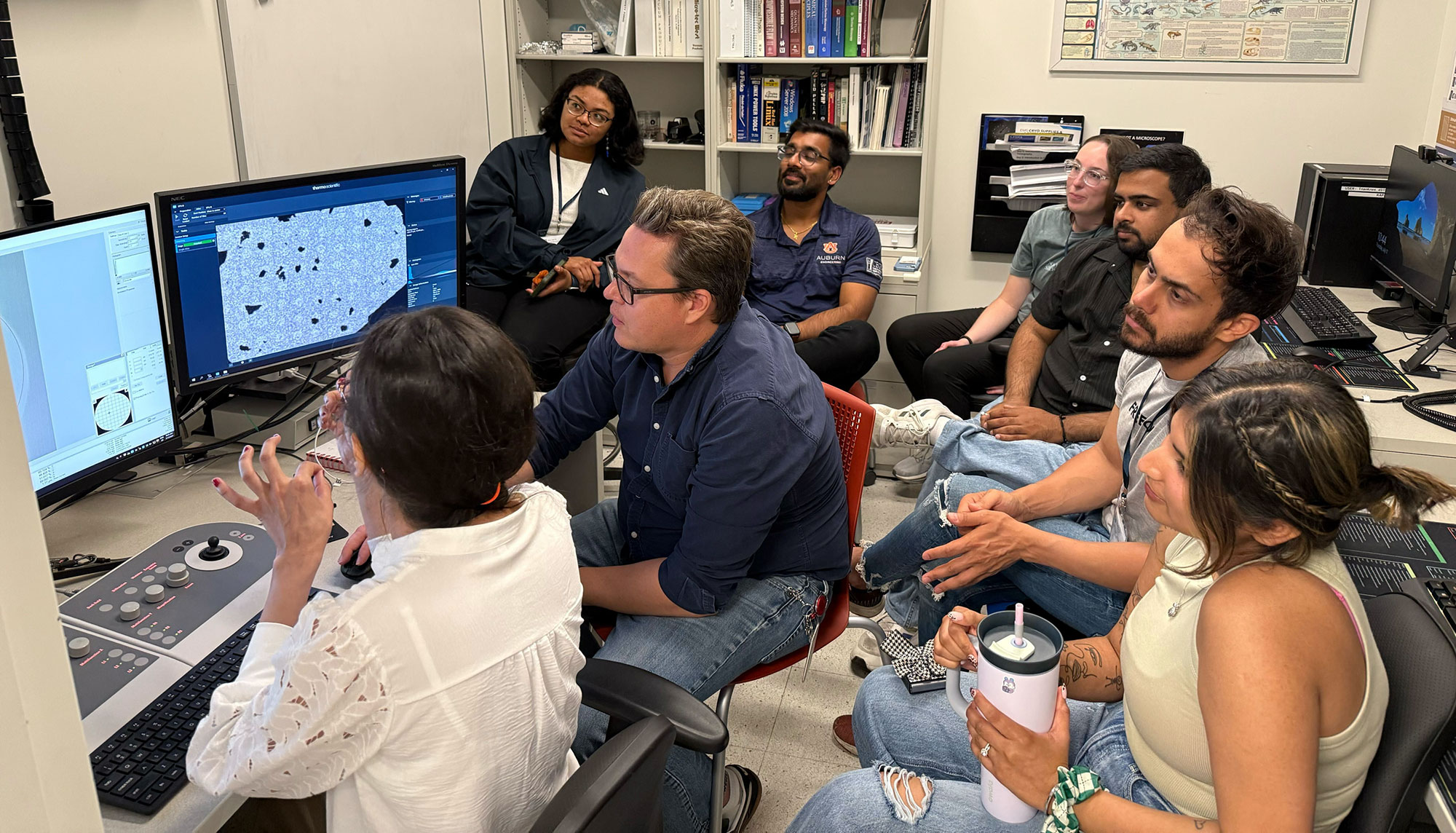University of Florida’s Elizabeth Aikman, a fifth-year Ph.D. candidate studying biomaterials from Bombyx mori silk, attended summer school in California in July to advance her studies. Bombyx mori are also known as domestic silk moths and are economically important to the billion-dollar sericulture (silk) industry.
She was accepted into the prestigious BioPACIFIC MIP (short for Biomaterials, Polymers and Advanced Constructs from Integrated Chemistry Materials Innovation Platform) after her advisor, Whitney Stoppel, Ph.D., suggested she apply. She was drawn to BioPACIFIC MIP because the equipment at its National Science Foundation‑funded facility offered instruments unavailable at UF.
“As a lab, we’ve wanted to perform SAXS on our silk‑based materials for years but have lacked access to beamline equipment,” Aikman said. “They also provide a digital ecosystem that lets users report data across all instruments, fostering collaboration and troubleshooting. I wanted to learn a few more techniques to finish my thesis work before graduating in spring 2026.”
SAXS — small‑angle X‑ray scattering — is a state‑of‑the‑art X‑ray system for characterizing biomaterials.
Aikman’s interest in naturally derived medical materials began when she earned her bachelor’s degree in chemical engineering at the University of Kansas, where she researched hydrogels that could be implanted to repair damaged knee meniscus. Her enthusiasm for biomaterials led her to UF’s Stoppel Lab to pursue her Ph.D.
“We work on silk‑based biomaterials for multiple healthcare applications,” she noted. UF also has many different departments—engineering, chemistry, dentistry, veterinary medicine, the hospital—and core facilities such as the Nanoscale Research Facility (NRF) and the Interdisciplinary Center for Biotechnology Research (ICBR), making interdisciplinary research more accessible.
Microcrystal electron diffraction (MicroED) is a special electron microscope housed at the University of California, Los Angeles that Aikman was especially eager to work with it. She earned a certification in the MicroED technique and made connections with peers nationwide.
Now back at UF, Aikman is drafting a proposal to return to the BioPACIFIC facilities to use additional equipment for research on bio‑derived materials, such as the silk products developed in the Stoppel Lab.
“I was impressed by the collaborative nature of the platform and the willingness of staff to share their experiences,” she said. “While I was in the MicroED training course, I also visited other BioPACIFIC equipment, participated in professional development sessions and attended panels of former users to learn where they moved after graduation. All of the techniques available at BioPACIFIC MIP are transferrable to many careers and industries.”
Aikman highly recommends the program and stresses that even if you don’t attend the summer school, “any lab can submit a proposal to BioPACIFIC MIP to use their facilities at no charge through an approved proposal. The platform is funded by NSF for researchers across the country to implement bio‑inspired design and research.” For more information, visit biopacificmip.org.

